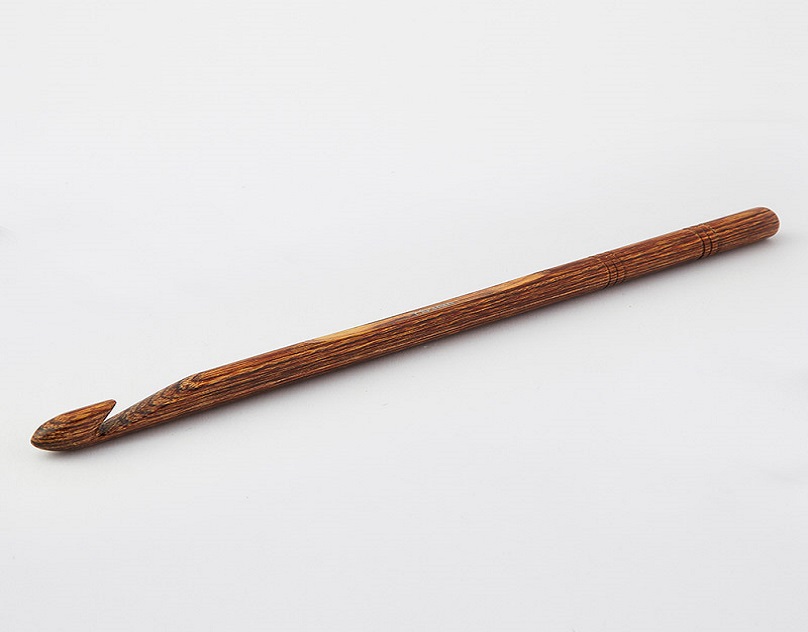Ready to delve into the vibrant and imaginative world of crochet? Crocheting is a delightful craft that allows you to create beautiful and functional pieces using just a crochet hook and some yarn. This guide will walk you through the basics of crocheting and introduce you to the essential tool — crochet hooks, whether you’re a complete beginner or someone wishing to brush up on their crochet skills.
Understanding Crochet Hooks
Before we delve into the world of crochet, it’s crucial to understand the heart of this craft – crochet hooks. These slender tools come in various shapes, sizes, and materials, each
designed to manipulate yarn or thread, creating interlocking loops to form various patterns and textures in crochet projects.
Single Ended Crochet Hooks: These are the most common kind of crochet hooks you’ll encounter. They have a hook at one end and a handle at the other. Single-ended crochet hooks are functional and appropriate for most crochet projects.
Wooden Crochet Hooks: These are a great option if you like a more natural sensation in your hands when crocheting. They are warm to the touch, lightweight, and an excellent solution for people who have hand pain.
Tunisian Crochet Hooks: Also known as Afghan hooks, are longer than standard crochet hooks and include a stopper at one end. For some applications, Tunisian crochet hooks are essential since it is an unique technique that creates a fabric that resembles knitting.
Double Ended Crochet Hooks: These hooks have a hook at both ends and are used for special techniques like cro-hooking and crochenit. Double ended crochet hooks are often not advised for beginners because they are a little more advanced.
How to Begin Crocheting
1. Get Your Tools Ready:
To begin crocheting, you’ll need a few essential tools:
Crochet Hooks: Beginners are advised to start with a medium-sized hook (about 5mm), and choose one made of aluminum or plastic for ease of use.
Yarn: Choose a medium-weight yarn in a light colour for better stitch visibility.
Scissors: Sharp scissors are essential for cutting yarn.
Yarn Needle: This needle will enable you weave in loose ends and finish your projects neatly.
2. Mastering the Basic Stitches:
Each crochet project starts with the foundation chain and then moves on to the single, double, and half-double crochets, which are the most fundamental stitches.
These are the core stitches of crochet, and after you’ve mastered them, you can make a variety of things.
3. Following Patterns:
It’s a good idea to start out with basic patterns as a newbie. Online resources abound with crochet patterns for everything from amigurumi dolls to scarves and blankets.
The ability to read and comprehend these patterns is one that must be honed.
4. Practice Makes Perfect:
Crocheting is a skill that gets better with practice. Don’t let mistakes demotivate you; they are all a necessary part of learning. You’ll gain confidence and skills as you practice more.
Start Your First Project
It’s time to start your first project now that you’ve practised your basic stitches. As a beginner, think about creating a simple dishcloth or scarf.
Choose a Pattern: Look online or in crochet books for beginner-friendly crochet patterns.
Make sure the pattern has a materials list, stitch tension measurements, and detailed directions.
Gather Materials: Invest in the yarn and hook suggested by the pattern. Make a swatch (a small sample) to check the gauge and make sure your stitches match the pattern’s requirement.
Follow the Instructions: Before starting, carefully read the pattern through. Keep an eye out for any specific directions or stitch alterations.
Starting the Crochet: Make a slipknot, then the foundation chain as directed in the pattern. Following the stitch directions, proceed through the rows. Keep track of your progress by counting stitches and rows.
Finishing Touches: After you’ve finished your craft, secure the yarn by fastening off (securely cutting it) and weave any loose ends using a yarn needle.
Enhancing Your Crochet Horizons
Once you’ve mastered the basics, you can explore more advanced crochet techniques, such as:
Colorwork: Experiment with various hues and patterns to create detailed patterns in your work.
Lace Crochet: Explore the world of delicate lace patterns, ideal for making doilies and shawls.
Amigurumi: Use the crochet technique to make charming stuffed animals and toys.
Filet Crochet: Use fillet crochet to create delicate, openwork motifs.
Conclusion: Your Crochet Journey Begins
With the correct crochet hooks and a little mentoring, you can go on a creative adventure that will not only soothe and de-stress you, but will also result in lovely handmade items you can cherish or share with loved ones.
In the words of the renowned author and crochet enthusiast, “Crochet is the art of turning thread into warmth and beauty.”
So grab your crochet hook, pick your yarn, and get started! With practise and devotion, you’ll soon be creating magnificent items that represent your distinct style and personality.
Visit our website to learn more about crochet hooks and other crochet necessities.
Happy crocheting!


